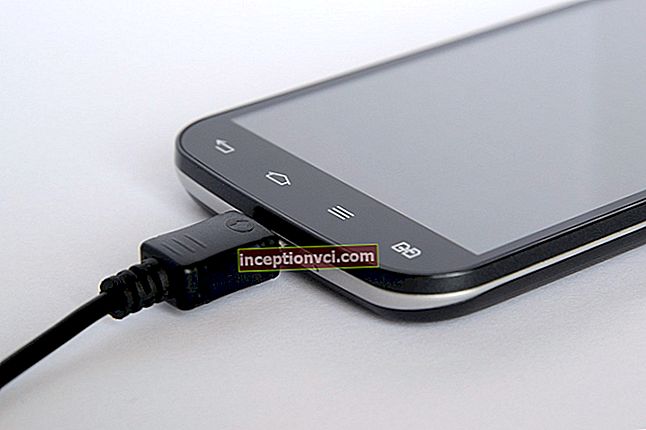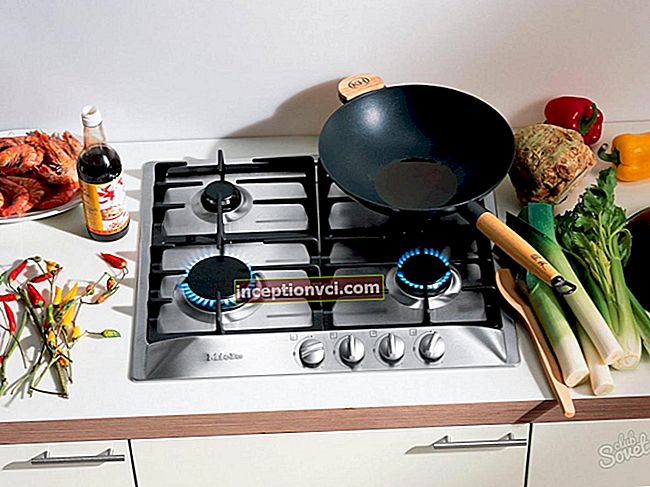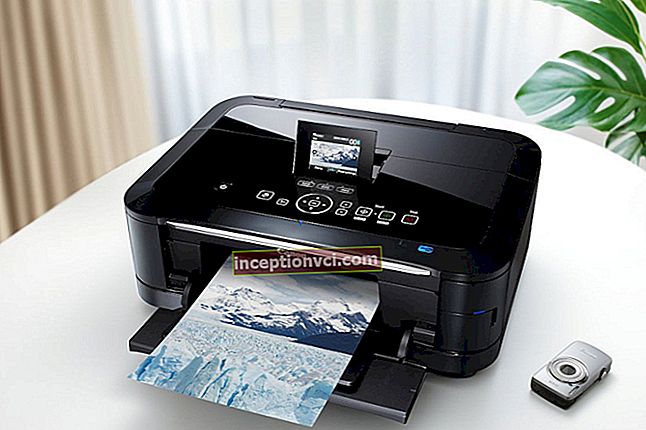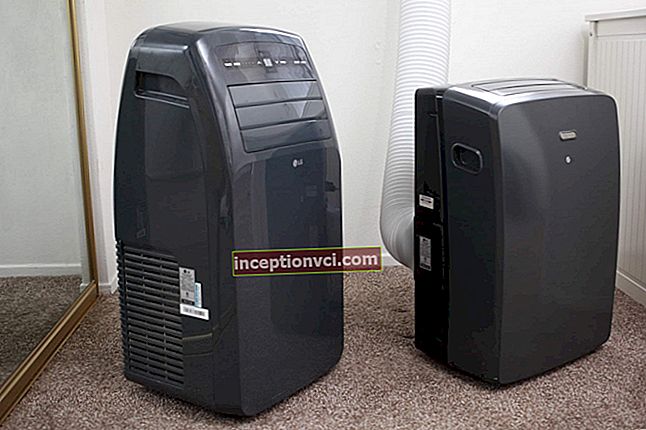INTRODUCTION
Samsung NX200 is a mirrorless system device with a new 20 megapixel APS-C matrix. Compact body, interchangeable optics, "hot shoe" for installing a flash (included with the camera), 3-inch AMOLED monitor with a resolution of 614 thousand points, sensitivity range ISO 100-12800, continuous shooting 7 frames per second (at maximum frame resolution) Full HD video recording (1920 x 1080p @ 30 fps) is just a little that can be said about this camera.
MAIN CHARACTERISTICS
Sensor | 20.3 megapixels; resolution - 5472x3648; APS-C format (physical size - 23.5x15.7 mm) |
Optical system | Samsung NX; in testing I used: 18-55 / 3.5-5.6 OIS |
Memory cards | SD or SDHC media |
Display | Active Matrix OLED, 3 inch, 614 thousandpoints |
File format | JPEG, RAW (compression standard - SRF), RAW plus JPEG; video - MP4 (compression standard - H.264) up to 1920 x 1080 pixels (16: 9) at 30 frames per second, stereo audio |
Interfaces | AV / USBoutput, mini-HDMI |
Dimensions | 117x63x36 mm (according to the manufacturer's statement) |
Positioning in the ruler | Between the younger NX100 and the older NX11 |
Samsung NX200 can be classified as a relatively new class of cameras that combine the positive properties of compact and SLR cameras. Such cameras appeared about 2 years ago, a large matrix was borrowed from DSLRs (it allows you to get high quality pictures) and the ability to change optics, while the complex autofocus system and mirrors have been abolished, as a result of significantly reduced dimensions.
Usually, such cameras are called "mirrorless" in terms of their main design feature. But recently, there is a more complete and accurate term compact system camera ("compact system camera" - KSK). In this case, the word "system" means that a whole photo system is built on the basis of the camera - an arsenal of optics for the most common tasks, external flashes, various attachments and many other accessories. If you wish, you can change the device itself, preserving all the accumulated periphery - the result is a constantly evolving system, multifunctional and capable of responding to various trends in the promotion of the digital photography market.
The NX system already has several models. The very first was the NX10, which looks like a "very small DSLR" in design, control system, and functionality. Then this camera was upgraded and the NX11 came out. At the same time, Samsung was working on a younger line of NX cameras - the first in the segment was the NX100 camera, which is noticeably smaller in size, easier to operate and cheaper.
The new model is quite different from its predecessor, the technical side has changed radically. The camera has become more compact, the matrix resolution is now 20 megapixels, the body is metal, the ISO range can reach 12800, the burst shooting speed has more than doubled (from 3 to 7 frames), the possibilities for image processing have expanded, and video recording can now be carried out in Full HD format.
It has become more convenient to hold the camera, most of the minor bugs have been fixed, the control system has been improved. One can not but rejoice at the desire of Samsung to take into account the specific comments of consumers and improve their designs.
A distinctive feature of the Samsung NX is the i-Fn (smart function) button on the lens barrel. By pressing the button, you can switch the active parameter, and adjust its value by turning the focusing ring. This control concept works with the NX200 as well.
CONTROL AND DESIGN
Compared to the previous model, the design has undergone the most radical changes. Although the NX100 had a streamlined body, it was a camera of rather impressive dimensions.

The NX200 has become noticeably smaller.The shape of the body has also changed, now the camera has a protruding grip, which contributes to a more secure and comfortable grip.

Recently, more and more often you can see the desire of various manufacturers to miniaturize compact system cameras. This is a kind of "war of dimensions". In my opinion, it doesn't make much sense, since in practice a couple of millimeters to the smaller or larger side do not really matter, since with the lens installed, especially if it is a telephoto lens, the dimensions of the device body are not a decisive factor. It is much more important that the small device is comfortable to hold in the hand - Samsung is doing well with that.

The NX200 is activated by a lever located along the edge of the shutter button. On the upper plane of the camera there are: a mode dial, a control wheel, microphone holes (there are 2 of them, therefore, when filming a video, stereo sound is recorded), as well as a "hot shoe" interface for connecting a flash and various accessories.
The NX200 lacks a built-in flash. The package contains a miniature flash (very similar to the one that comes with Sony NEX cameras, but it is much easier to install it, without additional tightening of the mounting screw). The same connector is used to connect additional accessories - electronic viewfinder or GPS module. Please note that there is no accessory port on the rear panel of the NX200 (like the NX100) that was used to mount the EVF10 (electronic viewfinder). This means that the said viewfinder cannot be fitted to the NX200; a new EVF model has been developed for it.

The image on the screen is rich, festive and bright. The pictures look attractive and effective, but this is not in favor of realism.
As with the NX100, the display is non-rotating. New anti-reflective coatings are used, so readability in bright sunlight is noticeably improved.

The controls are located on the right side of the rear panel. There is a separate button to start video recording. Under it is the exposure compensation key, and on the right side there is a perforated platform, which helps to more securely hold the device.
I would also like to say that the entry of exposure compensation is implemented in the best way - press the key with your thumb, at the same time, rotate the control dial on the upper plane of the camera with your index finger. The corrections made are immediately reflected in the live histogram, it is shifted accordingly. Thus, the drawback of the NX100 model has been eliminated - the histogram remained unchanged with the introduction of exposure compensation.

In general, many nuances of the control system have been improved in the NX200 - seemingly imperceptible and small, but in practice they play a big role in building a general idea of the device and the usability of it.
The top DISP navipad button is used to switch the display mode of information on the screen - both during shooting and during playback. The right, left and down buttons allow direct control of the three main parameters - sensitivity, shutter mode and focus type.

The NX200 has a fairly fast autofocus, but it cannot be called a record one. Sometimes you may notice a tendency to focus on the background rather than on the subject (especially if the subject is small - a ladybug crawling on a leaf).
Along the edge of the navipad is a ring, another rotating camera control.
The assignment of 3 more keys is quite predictable - deleting pictures, activating the in-camera menu and playback mode. But the Fn key is much more interesting. First, it can be programmed. But the main thing is that it allows you to call up the control panel (Smart Panel). The NX100 did not have such a panel, and the control of most of the parameters was not convenient enough, not very fast and optimal.


I found the NX200 control panel very user-friendly. You can see the current values of the most important parameters at the same time. An active parameter is indicated by a bright blue border.By turning the navipad ring (or by pressing the navipad buttons) you get to the required parameter (when you rotate the ring it turns out much faster), and with the upper control wheel you change its value. No confirmation clicks are required, so the control is as fast as possible. If desired, you can press the OK key, then a special page for managing the active parameter will open on the display. For example, in the panel in the illustration above, the "Snapshot Wizard" option is selected - these are image styles, color schemes, etc. So, by pressing the OK key, you expand the page on the screen to select the "Shot Wizard" - High (Vivid), Standard, Landscape, Portrait and the like.
Samsung NX200 supports RAW format. Each SRF file is approximately 45 MB in size.
I would like to say about the appearance of the zoom lens. Its magnification slightly exceeds 11x, focal lengths are in the range of 27-308 equivalent mm - without further ado, this is a universal lens for travelers. If you are an amateur and not well versed in photography, take a look at an example, it will help you to most reliably evaluate the capabilities of such a zoom:



PASM, PANORAMA, SCENE MODES
The main shooting modes are switched by rotating the mode dial (located on the upper plane of the camera). It contains ten provisions. The rotations of the disc are accompanied by animation on the display, when the mode is activated, a beautiful picture appears, as well as a small explanation of its purpose. There is a full set of PASM exponents. In the "Programming machine" mode, a program shift is possible. In ASM modes, the functions of 2 rotating controls are rigidly set - the navipad ring is responsible for controlling the aperture, and the upper dial for shutter speed. This uniformity brings certainty to the control system, and does not cause confusion with settings. However, someone, it seems to me, wants the ability to reconfigure the function of the controls. In general, the interface of the NX200 is convenient and nice. For novice photographers, it is simple and intuitive, despite this, the possibilities of deliberate intervention in the work of automation are quite rich. Communication with the device is a pleasure. During operation, the NX200 heats up noticeably, and the battery lasts for a short time. For active shooting, it is better to have a spare battery on hand. When the dial is set to SCENE, one of fifteen scene programs can be activated - Night, Beauty Shot, Portrait, Landscape, Sports, Children, Text, Macro, Sunset, Dawn, Fireworks, Backlight (Backlighting), Beach & Snow, 3D Shot and Sound picture. Program switching is also accompanied by vivid pictures and explanations regarding the essence of the plot. The Samsung NX200 has one-shot panoramic shooting. You just press the shutter button and move the camera smoothly, just like when shooting a video. The camera itself determines the direction of movement. When finished shooting, it automatically stitches the captured frames into a single panorama. The resolution of the final file is not constant, although it varies in a relatively small range. SMART FILTERS, MAGIC MODES There are 2 rather unrelated sub-modes hiding under the MAGIC disk position. One of them is called "Magic Frame" by the manufacturer. The camera has a set of prepared frames - the captured image is placed in a relatively small area of the frame, and the secondary part of the image, dedicated to a specific subject, serves as a frame. As I understand it, it will be possible to download additional magic frames from the Samsung website, or create one yourself, but this is still unverified information. Another no less interesting sub-mode is "Smart Filter" (in English. Smart Filter). These are 10 software image processing effects that radically change the frame. In the explanation on the display, the manufacturer made an inaccuracy - when switching between the "Auto filter" and "Magic frame" submodes,the explanation remains the same - “Taking photos with different photo frame effects”. Below is an illustration of the operation of the "Magic Frame" submode. The photograph itself is the central part, the sculpture and the fountain. Everything else is a newspaper style frame. Now let's see how Smart Filters work. If, while working with the camera, you use the English-language interface, then you will surely face some confusion in the names of the modes. The thing is that Smart Filters are not in the SMART section, as the user might think based on their name, but in the MAGIC section. This can be confusing. This confusion does not arise in the Russian-language interface - and this is good! The position of the SMART dial, which I just mentioned, refers to the intelligent automatic mode - the device itself recognizes the scene and makes the optimal settings. This mode is very popular with novice users. It is also better to start acquaintance with the device with it, gradually mastering the SCENE and PASM modes. CONTINUOUS, I-FUNCTION, VIDEO Samsung NX200 is capable of recording video in Full HD format (1920 x 1080 pixels, at 30 frames per second), with stereo sound; there are two options for the compression intensity. There are also options with a lower resolution - 1280x720p (30 or 60 frames per second), 640x480 and 320x240. Both at the beginning and at the end of the video, you can turn on a gradual fading (Fade out, Fade in). The menu selects one of four exposure control methods, corresponding to the PASM exposure modes. The shutter speed and aperture value can be changed both before shooting and on the fly - however, there is no way to avoid recording a "click" from the rotation of the wheels. The sensitivity value can also be set manually. Continuous shooting at a slow speed (Low) is at 3 frames / second, in a high-speed version (High), the shooting rate is 7 frames / second. For both cases, after 10 frames, the buffer overflows, and a noticeable pause is required to clear it. It is impossible to take pictures at this time. Shooting with single frames is slower than 1 frame per second. This is a pretty good indicator. INTELLIGENT FUNCTION One of the highlights of the NX range is a new control concept called i-Function. The lens barrel of the NX system has an “i-Fn” button. By pressing it, you can cycle through several parameters related to shooting, and the manual focus ring at this moment is responsible for controlling the selected parameter. The control ring (adjusts the parameter value) and the upper wheel (determines the parameters) work in the same way. The list of parameters that will be included in the iterable list can be changed in the menu. A new option, first seen in the NX line, is i-Zoom (Digital) Intelligent Zoom. You can choose a multiplier (2x, 1.7x, 1.4x or 1.2x) of the real optical focal length - according to the manufacturer, the image quality does not decrease. The lens priority mode is most closely related to the smart function. It is labeled "i" on the mode dial. By rotating the focus ring, you can switch both filter effects and scene programs. Compared to its predecessor in the NX200 model, the possibilities of the intelligent function are slightly expanded. Either way, the smart function concept adds variety to parameter control, making the interface more versatile and flexible. The function is very interesting, I think it will appeal to most fans of everything unusual. BROWSE AND IN-CAMERA MENU This menu is usually called “in-camera” (as opposed to the on-screen shortcut menu - in the case of the NX200, this is the “Smart Panel”), since when it is activated, the picture of the shooting scene disappears on the screen. You really "plunge into the apparatus", abstracting from what is happening around. The NX200 in-camera menu is divided into ten sub-items - of which, three are highlighted for shooting parameters (they are labeled "Camera") ... ... the next page is responsible for managing the "Video shooting" parameters, 2 more are reserved for user settings. Activating the "Correction of distortions" option significantly slows down the work, after each frame the camera freezes and writes the message "Processing" on the display. The next 3 pages are dedicated to settings related to the operation of the machine itself. The last page is responsible for the optional navigation system. Since in my case it was not used, the corresponding sections are suppressed and inaccessible. PLAYBACK MODE In playback (viewing) mode, the amount of information displayed on the screen is switched by pressing the DISP. There are three options for the user to choose - a small number of parameters at the bottom of the screen; detailed parameters superimposed on top of the image; the same list of detailed parameters, but with a reduced frame, thereby freeing up screen space for the histogram (two options - per-channel R-G-B and brightness). The top control wheel changes the image display scale. On initial zooming, there is a noticeable pause of approximately one second. Further zooming occurs faster, with virtually no pauses. There are several ways to display index (reduced) frames, as well as filtering by various parameters (shooting date and many others). Note that in the slide show mode, the automatic rotation of images does not function (even if you turned it on in the menu and it works when viewing frames). As a result, pictures taken in portrait orientation of the camera are displayed lying on their side when viewing a slideshow. The slideshow mode is almost unusable. Oddly enough, this bug was present in the NX10 and NX100 models, but the manufacturer has not fixed it. There are a lot of possibilities for editing the taken pictures in playback mode - face retouching, red-eye removal, backlighting, etc. The screen displays two versions of the image - without processing and with it. In some functions, the effect level can be adjusted. CONCLUSION AND EVALUATION Benefits disadvantages Ergonomics 10/10 Confident grip, comfortable controls, two rotary dials, nice graphical interface, instant access to most of the most important parameters using the control panel. In general, everything is at a fairly high level. The innovative idea - i-Function, control of parameters using a ring and a button on the lens - still seems to me controversial, but many will like it, and no one forces to use it. And in the previous camera Samsung NX100 ergonomics were at a fairly high level, but in the NX200 it is radically improved. Functionality 8/10 Samsung NX200 is not crammed with various "bells and whistles" and auxiliary features, but the basic photographic functionality of the camera is at a fairly high level. Image quality 9/10 At low ISO values, the pictures look great. High resolution and high quality optics work well together. It is best to avoid ISO limits - both noise reduction artifacts and color noise are strong enough. Price and quality 7/10 At the time of writing this review, the device was just on sale, and its cost is quite high. But, knowing the pricing policy of the company, there is no doubt that in the future the price for the NX200 will fall. If this does happen, then in terms of price / quality Samsung NX200 deserves a higher rating. Overall score 9/10 The Samsung NX200 has a 20-megapixel APS-C format sensor, which is currently the second highest resolution mirrorless camera. This is even more than that of DSLRs. Quality lenses from the NX system contribute to the imaging, resulting in excellent photos, especially at low sensitivities. Samsung NX200 is a compact, very pleasant and easy-to-use camera with an excellent interface. If you are thinking of purchasing a mirrorless camera, then the Samsung NX200 deserves a close look, especially if the cost decreases over time. 


























































